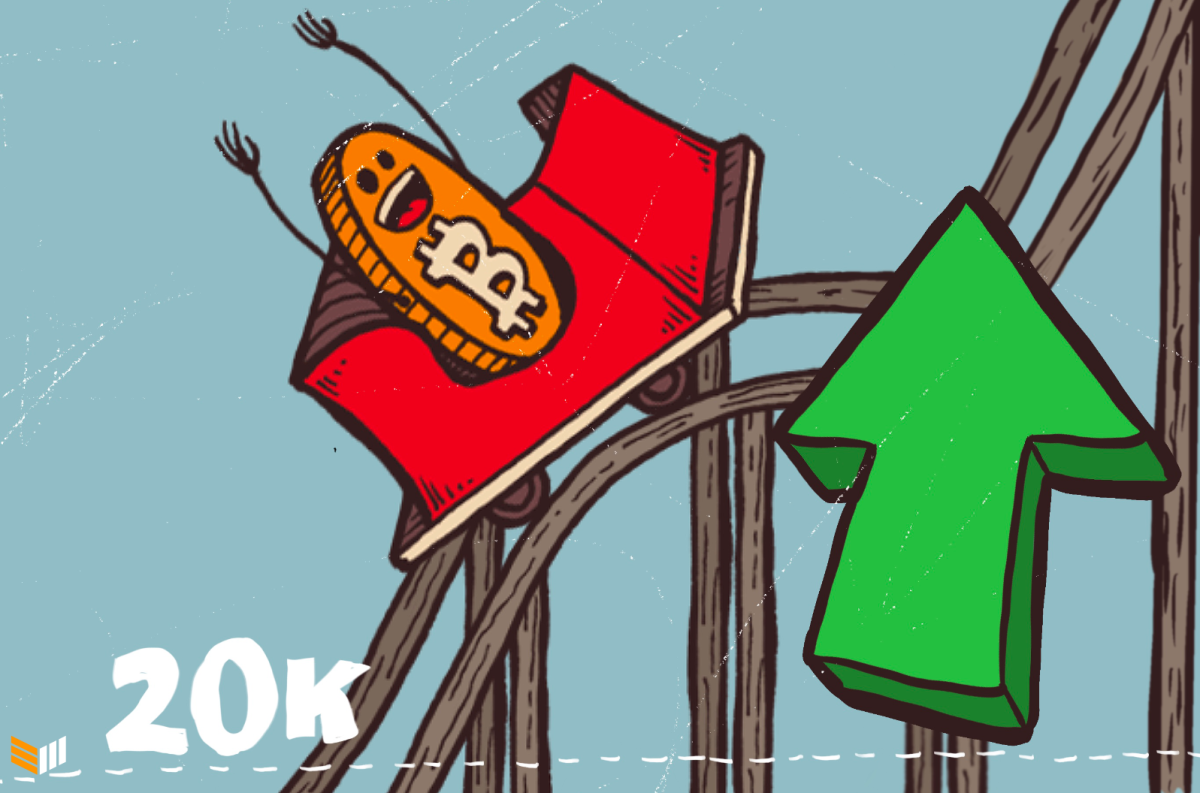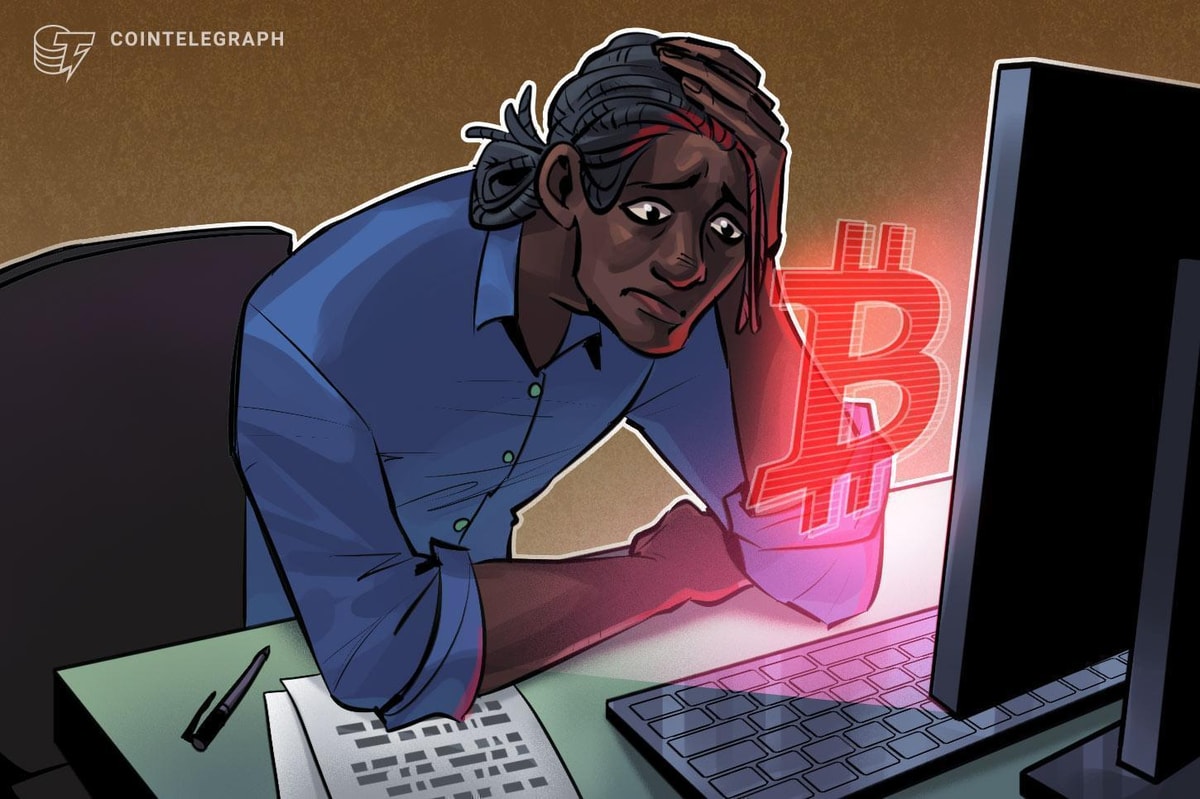
Fundamental supply metrics, user behavior, new developments and more pushed bitcoin past the $20,000 mark before 2020 came to an end.
All vital statistics favor bitcoin continuing to set new all-time highs in price. But not only has the $20,000 price level been reached; Bitcoin is likely to go much higher altogether. Weak hands and scalpers squeezing every dollar out of their position are now being left behind as bitcoin keeps trending higher.
The Case For $20,000-Plus Bitcoin
It is pertinent for everyone to look beyond the trading value exchanges may depict at any given time. Every time someone looks at the price, that figure represents a temporary snapshot of the inevitable. Whether bitcoin is at $17,000 or $19,000 at any given time won't make much of a difference.
The world’s leading cryptocurrency has now broken that next psychological barrier of $20,000 in search of even higher price targets. Most weekly red candles have failed to affect the price long-term throughout 2020 and it’s important to look past them now that we have eclipsed this pivotal mark.

Source: MXC Exchange
When one begins to look at the core statistics, there is no solid argument against bitcoin staying above $20,000 in the future. All of the critical metrics confirm that fewer bitcoin are going around to buy at these prices. It is a mere matter of time until the price responds positively.
And the illustrious $20,000 level is merely a stepping stone for what is yet to come in the future.
1. Exchange Reserves Keep Dropping
One of my favorite metrics to track is the supply of bitcoin across centralized exchange wallets.
The chart below confirms that there is an ongoing downtrend of available supply since March 2020. This trend is not slowing down either, despite some minor increases in BTC values along the way. For some time now, there have been fewer than 3 million BTC in exchange wallets. A remarkable trend, considering how the value remained above $18,000 in recent months without any problems.

Source: CryptoQuant
One can argue that this is still over 10 percent of the circulating supply. And that’s a valid point, but it isn't significant in the grand scheme of things. If 90 percent of something is not available for convenient purchase, the price of that item or asset will always go up. For bitcoin, the conveniently-accessible supply is dwindling rapidly.
Part of this momentum is aided by all of the companies suddenly investing in bitcoin. The information below shows how companies approach the world's leading cryptocurrency today.

Source: Bitcoin Treasuries
None of these companies appear to be in it for the short-term either. All of these treasuries helped to reduce the available BTC supply further, creating a new degree of scarcity that pushed us past $20,000.
2. Fewer People Store BTC On Exchanges
Making matters more intriguing is the ongoing Bitcoin netflow (the difference between bitcoin flowing into and out of exchanges’ wallets) among known exchanges.
Throughout 2020, there is more negative outflow compared to positive numbers. This is another remarkable trend considering that the value of BTC has risen spectacularly since March 2020. That alone tends to trigger more people to move their money off of exchanges. I plan to keep my funds in a hardware wallet until we reach a six-figure price.

Source: CryptoQuant
As more and more BTC leave exchanges daily than can be added in ongoing deposits, the scarcity factor will become more outspoken. Bitcoin already has a limited supply. Bigger and bigger chunks of its available supply are made inaccessible every month.
It was only a matter of time until the market shifted into a higher gear and blazed past that $20,000 "resistance level." This expected price surge took place before 2020 came to a close, indicating that next year may prove an exception for bitcoin.
3. Dormant Supply Remains Unaffected
One aspect of the bitcoin price that many newcomers and speculators tend to overlook is the dormant supply. The Glassnode chart below confirms that 33.153 percent of the bitcoin supply has not moved to a new address over the past three years. Owners of these BTC balances have held during the 2017 price run and are now doing the same.

Souce: Glassnode
As an analyst, these statistics indicate to me that BTC holders are not interested in selling before a much higher value becomes the new normal. That may be $50,000, or even six figures per BTC, for all we know. More importantly, traders may not find this supply on exchanges or other trading platforms for some time to come.
Again, this is a chunk of BTC that no one may be able to access for some time to come.
4. New Use Cases For Bitcoin Holders
Finally, I am impressed by how exchanges and other platforms aim to bridge the gap between bitcoin and decentralized finance. For instance, Lightning Labs has launched its Lightning Pool liquidity marketplace, IOVlabs has introduced a new sidechain model to enable more flexibility with RSK and at MXC Exchange, we’re planning a subscription product that offers returns on locked up BTC.
While this model is not just applicable to bitcoin, the world's leading cryptocurrency is finally receiving the support it deserves. Decentralized finance without Bitcoin will have no chance of surviving in the long term. Additionally, there is a lot of liquidity among bitcoin holders who have no interest in selling at the current price.
If all of the above does not make one bullish on bitcoin and its potential to go well beyond the $20,000 price tag, I don't know what will.
This is a guest post by Alex Zha. Opinions expressed are entirely their own and do not necessarily reflect those of BTC Inc or Bitcoin Magazine.










